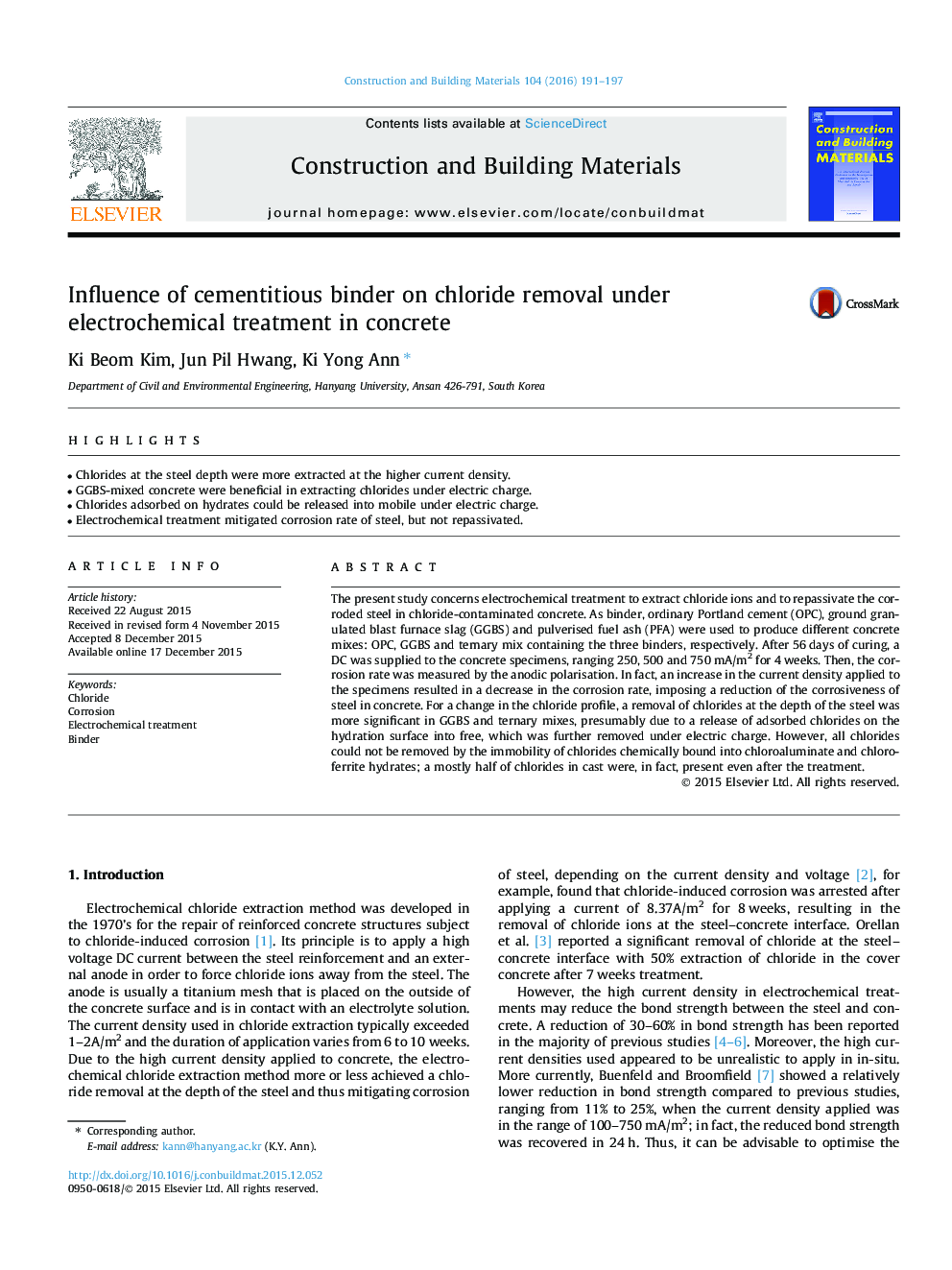| کد مقاله | کد نشریه | سال انتشار | مقاله انگلیسی | نسخه تمام متن |
|---|---|---|---|---|
| 256313 | 503548 | 2016 | 7 صفحه PDF | دانلود رایگان |
• Chlorides at the steel depth were more extracted at the higher current density.
• GGBS-mixed concrete were beneficial in extracting chlorides under electric charge.
• Chlorides adsorbed on hydrates could be released into mobile under electric charge.
• Electrochemical treatment mitigated corrosion rate of steel, but not repassivated.
The present study concerns electrochemical treatment to extract chloride ions and to repassivate the corroded steel in chloride-contaminated concrete. As binder, ordinary Portland cement (OPC), ground granulated blast furnace slag (GGBS) and pulverised fuel ash (PFA) were used to produce different concrete mixes: OPC, GGBS and ternary mix containing the three binders, respectively. After 56 days of curing, a DC was supplied to the concrete specimens, ranging 250, 500 and 750 mA/m2 for 4 weeks. Then, the corrosion rate was measured by the anodic polarisation. In fact, an increase in the current density applied to the specimens resulted in a decrease in the corrosion rate, imposing a reduction of the corrosiveness of steel in concrete. For a change in the chloride profile, a removal of chlorides at the depth of the steel was more significant in GGBS and ternary mixes, presumably due to a release of adsorbed chlorides on the hydration surface into free, which was further removed under electric charge. However, all chlorides could not be removed by the immobility of chlorides chemically bound into chloroaluminate and chloroferrite hydrates; a mostly half of chlorides in cast were, in fact, present even after the treatment.
Journal: Construction and Building Materials - Volume 104, 1 February 2016, Pages 191–197
